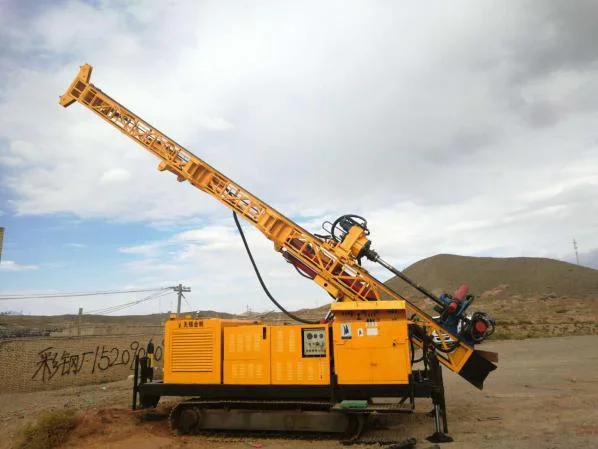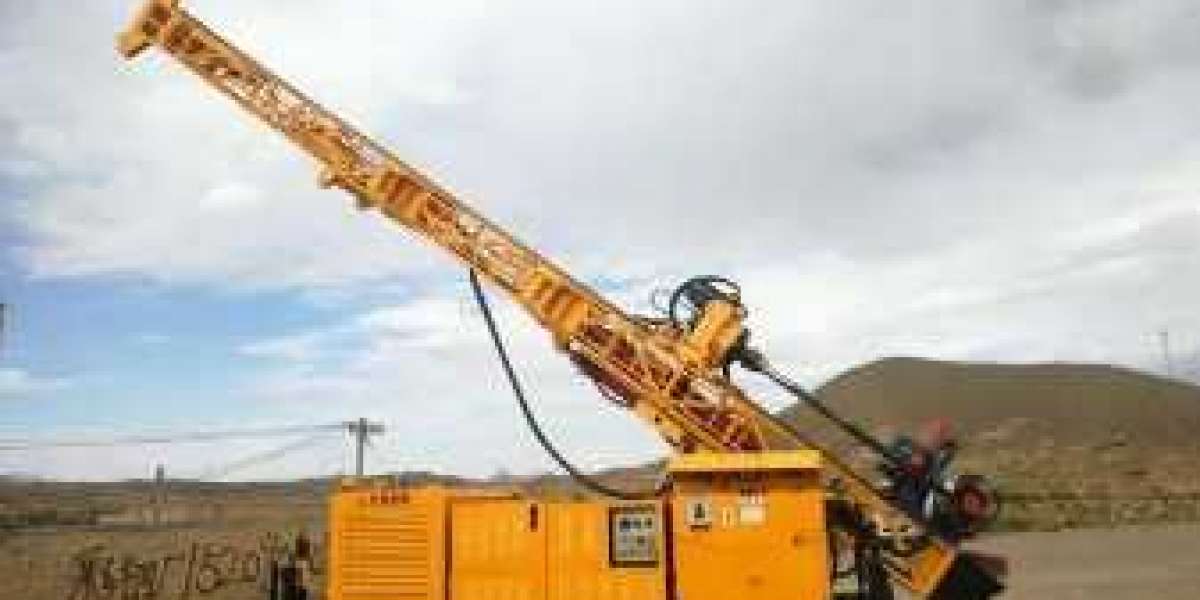In the field of drilling, there are various techniques and equipment used to extract valuable resources from the earth's surface. Two popular methods are Reverse Circulation Drilling rigs and rotary drilling. While both processes serve the same purpose, they differ in terms of their mechanisms, applications, and benefits. In this blog, we will explore the distinctions between these two drilling techniques, enabling you to have a better understanding of their unique features.
1. Reverse Circulation Drilling rigs
Reverse Circulation Drilling rigs, commonly known as RC drilling, is a technique primarily used in mineral exploration and sampling. It involves drilling deep holes into the ground using a dual-wall drill pipe system. The inner tube acts as a drill string, while the outer tube functions as a sampling mechanism. The high-pressure air or water, injected down the drill string, carries the cuttings or sample materials up the annular space between the inner and outer tubes.
Key Characteristics of RC Drilling
- Efficient for deep-hole drilling: Reverse Circulation Drilling rigs is particularly effective for reaching great depths, making it ideal for mineral exploration purposes.
- Minimal fluid loss: Due to its closed-loop system, RC drilling minimizes fluid loss during the extraction process, enhancing sample recovery rates.
- Effective in loose or unstable formations: RC drilling can handle challenging geological conditions, such as unconsolidated structures, as it ensures continuous sample collection without caving or collapsing formations.

2. Rotary Drilling
Rotary drilling is a widely used method in various industries, including oil and gas, construction, water wells, and geothermal exploration. This method involves rotating a drill bit attached to the end of a drill string, which cuts through the earth's layers to reach the desired depth. While drilling, a drilling mud or fluid is continuously circulated to cool the drill bit, stabilize the wellbore, and transport the drilled cuttings to the surface.
Key Characteristics of Rotary Drilling:
- Versatile applications: Rotary drilling is highly versatile, making it suitable for both shallow and deep drilling applications across different industries.
- Effective in diverse geological formations: This drilling method can handle a wide range of formations, including hard rock, soft sediment, and unconventional reservoirs.
- Efficient in borehole stability: The continuous circulation of drilling fluids helps maintain borehole stability by preventing collapse or caving in weak or unstable formations.
3. Comparison between Reverse Circulation Drilling rigs and Rotary Drilling
To have a clearer understanding of the differences between Reverse Circulation Drilling rigs and rotary drilling, let's compare them based on certain key factors:
Drilling Method:
- Reverse Circulation Drilling rigs: In RC drilling, the cuttings or sample materials are brought to the surface through the annular space between the inner and outer tubes. This method allows for efficient sample collection for analysis and evaluation.
- Rotary Drilling: With rotary drilling, the drill bit is directly attached to the drill string, and the drilled cuttings are transported to the surface using drilling fluids circulated throughout the wellbore.
Drilling Fluids:
- Drilling Fluids of Reverse Circulation Drilling rigs: RC drilling typically uses air or water as the drilling fluid. The choice of fluid depends on the geological conditions and the objectives of the drilling project. Air is often preferred in hard rock formations, while water is used in other formations to maintain stability and enhance sample recovery.
- Drilling Fluids of Rotary Drilling: In rotary drilling, a specialized drilling mud is circulated down the drill string to cool the drill bit, lubricate and stabilize the wellbore, and carry the cuttings to the surface. The composition of the drilling mud can be adjusted depending on the specific drilling requirements.
Drilling Speed:
-Drilling Speed of Reverse Circulation Drilling rigs: RC drilling is generally slower compared to rotary drilling because the focus is on sample recovery rather than fast penetration rates. It is crucial to ensure accurate sampling, especially in mineral exploration where the extracted samples provide valuable information about potential deposits.
- Drilling Speed of Rotary Drilling: Rotary drilling is known for its faster penetration rates due to the rotation of the drill bit and the use of efficient drilling mud. It is commonly employed in projects that require higher production rates or drilling through various formations within a shorter time frame.
![]()
Applications:
- Applications of Reverse Circulation Drilling rigs: RC drilling is primarily used in mineral exploration to obtain accurate samples from deep holes. It allows geologists to analyze the extracted materials and determine the presence of valuable minerals or deposits. Additionally, RC drilling can also be employed in geotechnical investigations and environmental monitoring projects.
-Applications of Rotary Drilling: Rotary drilling has a wide range of applications. It is commonly utilized in oil and gas exploration, water well drilling, construction projects, geothermal energy extraction, and even scientific research.
Equipment:
-Reverse Circulation Drilling rigs Equipment : Dedicated Reverse Circulation Drilling rigs are designed explicitly for RC drilling operations. These rigs feature dual-wall drill pipe systems, air compressors or pumps, and specialized sampling equipment to facilitate efficient sample recovery.
- Rotary Drilling Equipment : Rotary drilling can be performed using various types of drilling rigs, including conventional rotary rigs and advanced rigs with automated controls. The rig setup typically includes a rotary table, drill pipe, drill bit, mud pits, mud pumps, and other necessary components.
Conclusion
Reverse Circulation Drilling rigs and rotary drilling are both essential techniques for extracting resources from the earth's surface. While Reverse Circulation Drilling rigs focuses on efficient sample recovery in deep-hole exploration, rotary drilling offers versatility and stability in various geological formations. The choice between the two methods depends on project-specific requirements, such as the desired depth, geological conditions, production rates, and the type of resources being targeted.
By understanding the distinctions between these drilling techniques, professionals in the industry can make informed decisions when selecting the appropriate method for their projects.
Wuxi Jinfan Drilling Equipment Co., Ltd is a leading manufacturer and supplier of reverse circulation drilling. With a professional and dedicated team, the company is committed to delivering top-notch products that meet industry standards. Their reverse circulation drilling lineup includes Anchoring Drilling Rigs, Water Well Drilling Rigs, Sea Geological Exploration Core Drilling Rigs, Surface Hydraulic Core Drilling Rigs, and Underground Core Drilling Rigs.
If you are in need of a reliable drilling solution that prioritizes efficiency and accuracy, consider investing in a conventional reverse circulation drilling tool from Wuxi Jinfan Drilling Equipment Co., Ltd.
Email:saler@wuxishuangfan.com







